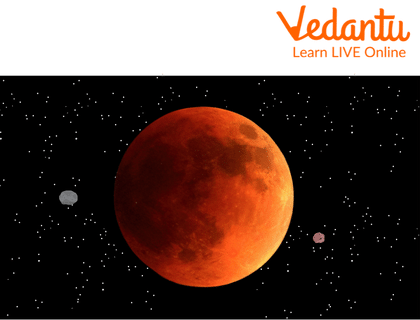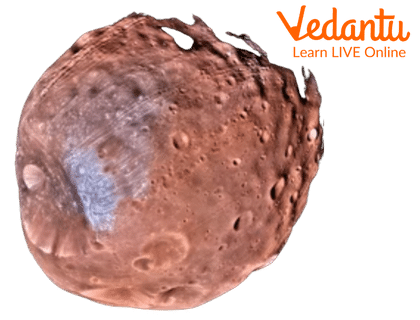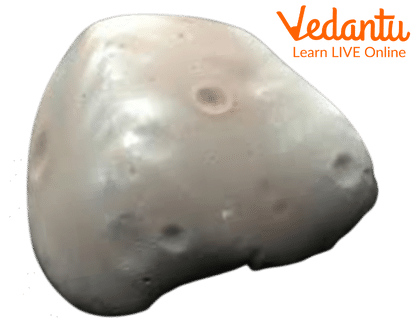




Mars: The Fourth Planet
Mars is the fourth planet from the Sun, in our solar system, our Earth is the third. It is also referred to as the red planet since from Earth the surface of the planets occurs red in colour. It has a rocky, dusty, and thin atmosphere. The planet has been under a lot of study by the scientists on Earth because it is considered as the next destination where humans can survive other than the Earth itself. In this article, we will look at the reason why out of the seven other planets, Mars is considered fit for Human Inhabitation and also discuss some fun and interesting facts about the Red Planet.

Mars
Mars Facts for Kids
Some fun and interesting Mars Facts for Kids are mentioned below:
Mars is given a nickname: Red Planet because it is covered by a rust like dust, thus it appears to be red in colour when viewed from Earth.
It has been discovered that Mars experiences a lot of violent dust storms which may result in a change in the planet’s surface.
Currently, Mars is the only planet which is considered as a possible alternate of the earth to inhabit the human population by the scientists on earth.
Mars also has many volcanoes, the most popular one being Olympus Mons.
The atmosphere is not thick enough to trap the Sun’s heat like Venus, thus the planet is extremely cold.
Temperature and Atmosphere of Mars
The gravitational forces of Mars are very weak, thus it cannot hold onto its atmosphere, resulting in it having an extremely thin layer of atmosphere, which isn’t thick enough for it to trap the Sun’s heat energy, that is why the planet is very cold, even though it is only the fourth planet from the Sun and receives a good amount of light and heat energy from the Sun.
The temperature on Mars ranges from -120 degrees on a normal winter night to 25 degrees on a summer night.
Moons of Mars
Mars has two natural satellites also known as moons which orbit around it in fixed orbits. These two moons are Phobos and Deimos.
Deimos is the smaller moon out of the two and is present on the outer side whereas Phobos is the innermost and the larger one of the two natural satellites.

Phobos: One of the two Moons of Mars

Deimos: One of the Two Moons of Mars
What’s Special about Mars
As mentioned before, out of the seven other planets, Mars is the only planet which is considered as a possible alternative to Earth to sustain life. Why is that?
There are several reasons for this, some of which are mentioned below:
It usually has calm conditions and has a close proximity with earth, which is currently the only planet sustaining life.
Even though the conditions on the planet, like the subzero temperature and thin atmosphere with low gravity, are not human friendly, but yet they aren’t insurmountable, our scientists believe we can eventually develop technologies which will be able to overcome these conditions and life might be possible on the planet. It indeed has better conditions as compared to the other six planets.
The planet also has a similar length of days as that on earth because of its close proximity to our planet.
Mars is the fourth planet from the Sun and comes behind earth, it is in the perfect position and thus it lies in the habitable zone, which is not too close yet not too far away from the Sun. The closer planets receive too much of the Sun's heat energy, thus raising the temperatures above what is tolerable by organisms and the far away planets are too far from the sun and receive little to no sun’s energy thus making them too cold.
Sample Questions
State whether the mentioned statements are true or not.
The Sun is at the focus of our solar system.
Ans: True.
Mars is considered as a Red Planet.
Ans: True.
Since Mars is not that far away from the Sun, its average temperature ranges from 25 to 40 degrees.
Ans: False, the temperature usually ranges from -120 degrees to 25 degrees, depending on the season.
Mars has a stronger gravity than earth.
Ans: False, Mars has a very weak gravitational force.
Learn by Doing
Complete the following statements by filling in the blanks.
Mars has a _____ atmosphere.
Ans: thin
The atmosphere is mainly made up of _________.
Ans: Carbon dioxide
The larger moon of Mars is ________ .
Ans: Phobos
The outermost moon of Mars is ________.
Ans: Deimos
Summary
Mars is the fourth planet from the Sun in our solar system. It is nicknamed the Red Planet because of its rust-like dusty atmosphere. The planet’s gravitational forces are weak and the atmosphere is too thin to trap the Sun’s energy making the planet cold. The average temperature during winters can go down to -120 degrees and in summers it comes up to 25 degrees. It has two moons, namely Phobos and Deimos. It is currently the only planet from the seven other planets in our solar system which is believed to be able to sustain life like earth in the coming years.
FAQs on Mars Facts for Kids
1. How far is Mars from Earth?
There are eight planets in our solar system, the third one being the Earth and Mars being the fourth planet from the Sun. Earth being 149.98 million Km away from the Sun and Mars being 217.13 Km away from the Sun. Thus, the distance between Earth and Mars is 121.98 Km.
2. Is Mars bigger than Earth?
No, Mars is not bigger than Earth, it is about half the size of Earth.
3. Is there life on Mars?
There is no life on Mars yet, but our scientists think that once we develop technologies to overcome the adverse atmosphere on the planet, it would be possible to sustain life on Mars.





















